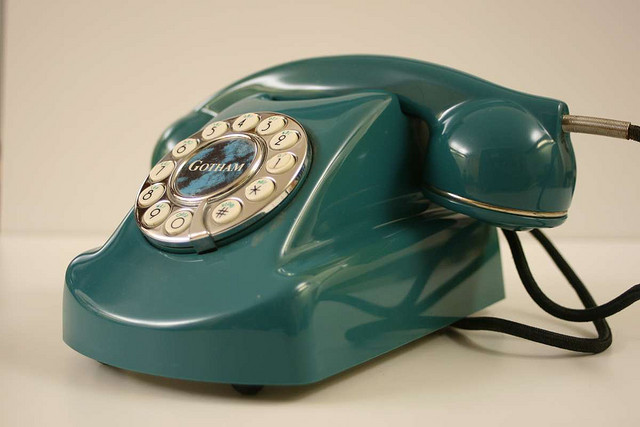
BYOD has been talked about ad nauseam, but now there’s a trend surfacing that will start to push BYOD out of the picture in the next few years. Corporately Owned, Personally Enabled (COPE) devices are the next big thing, and within the next three years, projections indicate 70 percent of global organizations will adopt it.
[aditude-amp id="flyingcarpet" targeting='{"env":"staging","page_type":"article","post_id":728414,"post_type":"guest","post_chan":"none","tags":null,"ai":false,"category":"none","all_categories":"business,enterprise,mobile,security,","session":"D"}']BYOD is a concept that was floated first in Asia, where CIOs were quick to embrace the trend, but also quick to realize its implications: challenges in securing corporate data, an increased need for IT resources and support, increased costs, difficulty maintaining network performance, and challenges in managing devices and applications.
Companies like BlackBerry, which was ahead of the curve in adopting BYOD, were also the first to try out COPE pilots, where the goal was essentially to show customers this model was a better, less risk-laden option for enterprise mobility than was BYOD.
AI Weekly
The must-read newsletter for AI and Big Data industry written by Khari Johnson, Kyle Wiggers, and Seth Colaner.
Included with VentureBeat Insider and VentureBeat VIP memberships.
BYOD vs COPE
The biggest difference between BYOD and COPE is the management of personal data on the device.
Employees own their devices with BYOD, hence Bring Your Own, which gives organizations less control over how they are being used. It goes without saying that this leads to massive potential for security issues. It also puts an organization in peril, especially with the sales force owning their own phone numbers.
With COPE, the end user has more flexibility, but the organization still has control over costs, security, and other areas of potential risk such as legal and HR implications. For example, corporations can dictate what carrier the organization uses and what devices can sit on the network but may, for example, allow users to indicate what apps they want on their phone, or may offer employees a device catalog to select from. This gives employees options, while also minimizing the need for IT to manage an overwhelmingly mixed range of devices
COPE also gives organizations the power to monitor policies and devices, beyond simply selecting which ones can be distributed. If the device is stolen, the company can send a wipe command. Organizations can also conduct automatic checks on malware and dangerous applications, sending warnings about certain apps to the device owner in order to proactively avoid potential issues.
Migrating to COPE
When helping our clients migrate to COPE, we’ve found a number of ways to aid organizations in further maximizing the benefits.
Some best practices to consider include:
[aditude-amp id="medium1" targeting='{"env":"staging","page_type":"article","post_id":728414,"post_type":"guest","post_chan":"none","tags":null,"ai":false,"category":"none","all_categories":"business,enterprise,mobile,security,","session":"D"}']
- Take advantage of the ability to recycle devices as part of the contract. Alternatively, to keep costs down, buy in bulk. By doing so, you can negotiate substantial discounts.
- To take that one step further, beyond minimizing just the device costs, outsourcing enterprise mobility contracts also enables organizations to make the best use of resources and budgets. You can negotiate usage-based plans, for example, to minimize unnecessary spend.
- Understand the benchmarks from cost benefits, usage statistics, and device performance so you have a framework from which to measure and learn. Benchmarking is important when making a transition in your mobility model, as it provides a measureable way to evaluate costs, usage, performance. and more. It enables executives within your organization to see the tangible benefits of a COPE model by clearly indicating the improvements in productivity, efficiency, and overall business execution from a numbers perspective.
- Be aware of potential hidden costs. While there are more hidden costs associated with BYOD than with COPE, costs to look out for include device management and maintenance, personal service partitioning and impacts, and migration expenses, among other things.
- Due to dramatic improvement in device software upgrades, it’s vital to ensure the internal systems are able to work with the latest software versions. This can have a bearing on how well COPE adoption can take place without a huge hidden migration cost.
While COPE enables organizations to better control corporate assets — over information, as well as tangible control — it also boosts employee satisfaction. This, in turn, results in a surge in employee productivity (evident from the days of BlackBerry) due to the shortening of decision support.
So while today BYOD buzz continues to dominate enterprise mobility discussions, you’ll soon start to see COPE fazing it out as more organizations realize the benefits and flexibility that can be achieved though this alternative model.
Mani Gopalaratnam heads the architect team at Xchanging, Inc. (XCH: LSE), a $1B business process and technology services provider and integrator. He is also Head of Innovation for the company and CTO for the region of Asia Pacific. To learn more, visit www.xchanging.com.
VentureBeat's mission is to be a digital town square for technical decision-makers to gain knowledge about transformative enterprise technology and transact. Learn More